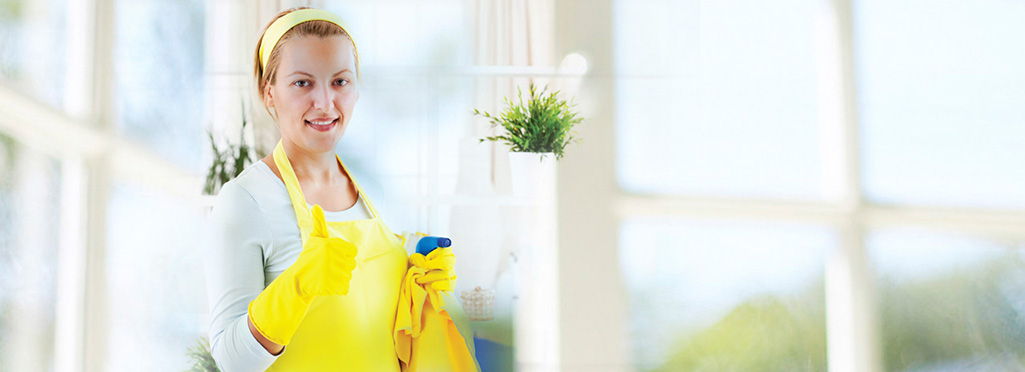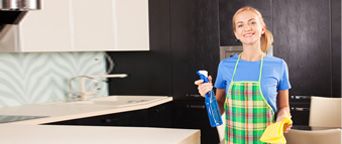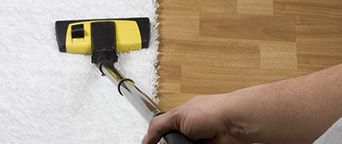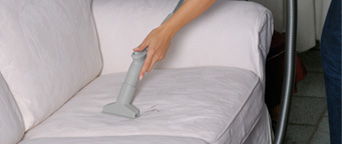Your Guide to Keeping uPVC Window Frames Spotless
Posted on 07/09/2025
Your Guide to Keeping uPVC Window Frames Spotless
uPVC (unplasticized polyvinyl chloride) window frames have become an increasingly popular choice for homeowners and businesses worldwide due to their durability, cost-effectiveness, and stylish look. However, to keep uPVC window frames spotless and to prolong their lifespan, proper maintenance and regular cleaning are crucial. In this comprehensive guide, we cover everything you need to know about maintaining sparkling clean uPVC window frames. Follow our tips, tricks, and best practices to ensure your frames always look their best!
Why Maintaining Clean uPVC Window Frames Matters
Regularly cleaning uPVC window frames not only enhances your property's curb appeal but also prevents long-term damage that results from dirt, grime, or mold buildup. Spotless uPVC frames:
- Help maintain their original color and finish
- Reduce the likelihood of staining or permanent discoloration
- Ensure optimal performance by preventing operational issues
- Enhance the value and visual appeal of your property
- Promote a healthier home environment

Understanding uPVC: Why Is It So Popular?
Unplasticized polyvinyl chloride, commonly known as uPVC, is a material that is highly frost-resistant, waterproof, and impervious to the sun's rays. It doesn't rot or warp like wood, nor does it corrode like metal. These qualities make uPVC frames an excellent low-maintenance choice for windows and doors.
Key Benefits of uPVC Window Frames
- Weather resistance: uPVC doesn't chip, warp, or rust.
- Energy efficiency: They help reduce heat loss and drafts.
- Cost-effectiveness: Affordable and durable, requiring minimal maintenance.
- Easy cleaning: Non-porous, making stains and grime less likely to penetrate.
Common Causes of Dirt and Stains on uPVC Window Frames
Even though uPVC is robust, it isn't immune to unsightly marks. Here are the most common culprits behind dirty uPVC window frames:
- Airborne Dust & Pollution: Particularly prevalent in urban areas
- Fingerprints & Handprints: Especially on frequently opened windows and doors
- Rainwater Marks: Water stains and mineral deposits from rain or sprinkler systems
- Mold & Algae: Most common in shaded, damp areas
- General Grime: Everyday buildup from garden work, pets, or children
Prevention and rapid intervention are key to keeping uPVC frames looking spotless all year round.
How Often Should You Clean uPVC Window Frames?
The frequency of cleaning uPVC window frames depends on location and environmental factors. Here's a simple guideline:
- Urban/city areas: At least every 6-8 weeks due to higher pollution levels
- Rural/suburban locations: Every 10-12 weeks, or as needed
- Coastal or high-traffic locations: Monthly, as sea salt and dust can accumulate quickly
Regular spot cleaning can tackle minor marks immediately, preventing them from becoming stubborn stains.
Essential Tools and Supplies for Cleaning uPVC Window Frames
Before you begin, make sure you have the right tools and cleaning products:
- Soft microfiber cloths or non-abrasive sponges
- Bucket of warm water
- Mild dish soap or dedicated uPVC cleaner
- Vacuum cleaner with brush attachment (for dry dirt and cobwebs)
- Old toothbrush or soft brush (for crevices and corners)
- White vinegar and baking soda (for tough stains)
- Optional: Specialist uPVC cream cleaner for stubborn marks
Never use abrasive powders, metal scourers, or harsh solvents as these can scratch and damage the uPVC surface!
Step-by-Step: Cleaning uPVC Window Frames Spotlessly
1. Prepare the Area
- Open your window fully and clear away any obstructions.
- Lay down an old towel or sheets to protect your flooring from spills.
2. Remove Loose Dirt and Debris
- Use a vacuum (with a soft brush attachment) around the inside and outside edges to collect dust, cobwebs, or insects.
- Pay attention to drainage channels--blockages here can cause leaks or dampness.
3. Wash the uPVC Surface
- Mix a few drops of mild liquid soap in a bucket of lukewarm water.
- Dampen a soft cloth or non-abrasive sponge and wipe the whole frame surface.
- Don't forget the underside and edges of the window frames!
- For corners and grooves, use an old toothbrush.
4. Remove Stubborn Stains
- If gentle washing doesn't work, try a paste of baking soda and water. Rub gently with a soft cloth on the stained area.
- Alternatively, use a little white vinegar diluted with water for mineral deposits or water stains.
- If you use a commercial uPVC cleaner, always check the manufacturer's instructions first.
5. Rinse and Dry
- Wipe down the frame with clean water to remove any soapy residue.
- Use a dry microfiber cloth to buff the frame, leaving it sparkling and streak-free.
6. Clean the Glass
- Once the frames are spotless, finish the job with your favorite glass cleaner for a streak-free shine.
Tip: If you're cleaning externally, choose a cloudy day--direct sunlight can cause streaking!
Special Care for White uPVC Window Frames
White uPVC frames look bright and fresh when clean, but can visibly show dirt and stains. Here's how to tackle white uPVC window frame cleaning:
- Mixed vinegar and hot water solutions work well on surface stains.
- A specialist white uPVC cleaner or cream polish can restore faded or aged frames.
- For yellowing frames (often due to UV, pollution, or poor quality uPVC), try a paste of baking soda and hydrogen peroxide. Test in an inconspicuous spot first!
What NOT to Use on uPVC Frames
To keep uPVC frames looking spotless, avoid these common mistakes:
- Abrasive scrubbing pads or steel wool: These leave scratches and can remove the glossy finish.
- Bleach or harsh chemical cleaners: May discolor the surface or make it brittle overtime.
- Pressure washers: High pressure can damage seals or force water inside the frame.
- Colored cleaners: Some colored products can stain the plastic, especially on white frames.
Handling Mold, Mildew, and Algae on uPVC Window Frames
If your uPVC window frames collect green or black patches in shaded, damp areas, act quickly:
- Mix a solution of 1 part white vinegar to 3 parts water.
- Apply with a spray bottle or cloth and let it sit for 10-15 minutes.
- Scrub gently with an old toothbrush and rinse thoroughly.
- For stubborn mildew, add a drop of mild detergent or use a dedicated mold remover suitable for plastic.
Keeping windows dry and improving ventilation also prevents mold regrowth.
Maintenance Tips to Keep uPVC Windows Spotless Year-Round
Check Seals and Hinges
- Ensure seals are intact--leaky seals lead to condensation and can harbor mold.
- Lubricate hinges and locks every 6 months with a drop of silicone spray or light oil.
Inspect Drainage Channels
- Clear any debris from drainage holes to avoid water buildup inside the frames.
Prevent Scratches and Marks
- Don't use ladders or hard objects directly against the uPVC frame.
- Wipe off bird droppings or sap immediately--they can stain if left too long.
Dealing with Discolored or Aged uPVC Frames
Over time, lower quality uPVC may yellow or dull. Here's what you can do:
- Specialist Renovation Cream: Apply to revive faded finishes (always patch test first).
- Baking Soda Paste: Gently buff with a soft cloth for stubborn stains.
- Avoid Painting: Painting uPVC is not usually recommended as it can peel or void warranties.
- If frames are very old or heavily discolored, consider professional restoration or replacement for optimal results.
DIY uPVC Window Frame Cleaning vs. Professional Services
DIY cleaning is quick, cost-effective, and usually sufficient for most homes. However, professional cleaning services might be needed if:
- You have high or hard-to-reach windows
- Discoloration, stains, or buildup don't respond to regular cleaning methods
- You want specialist treatments or renovation services for aging uPVC
Environmental Considerations: Cleaning uPVC the Eco-Friendly Way
To keep your uPVC frames spotless and minimize your environmental footprint:
- Use biodegradable soaps or make your own natural cleaner (mix white vinegar, water, and a splash of lemon juice).
- Avoid rinsing harsh chemicals into drains or flower beds.
- Re-use soft cotton cloths and sponges to cut down on waste.

FAQs: Keeping uPVC Window Frames Spotless
Can I use bleach or bathroom cleaner on uPVC frames?
No. Bleach and harsh chemical agents can discolor and damage the surface over time. Stick to mild detergents, vinegar, or specialist uPVC products.
How do I remove paint or sealant from my uPVC window frames?
First, let paint or sealant dry completely. Then, gently scrape it off with a plastic spatula or use a bit of white spirit on a cotton bud for stubborn spots (test in a discreet area first).
What is the best way to maintain the shine of uPVC frames?
Polish regularly with a soft, dry cloth and use a specialist uPVC cream cleaner or polish for extra gloss if needed.
Why are my uPVC frames yellowing?
Yellowing can result from prolonged sun exposure, pollution, or using harsh cleaners. Use a mixture of baking soda and hydrogen peroxide, or consult a professional restorer if the discoloration persists.
Conclusion: Enjoy Spotless uPVC Window Frames Year After Year
Maintaining pristine uPVC window frames is simple and cost-effective--just follow the correct cleaning methods, avoid harsh chemicals, and establish a regular care routine. Spotless frames don't just look better; they help prolong the life and performance of your windows, saving money and hassle in the long run.
Whether you're tackling everyday grime or bringing tired frames back to life, use these expert tips to keep your uPVC window frames sparkling clean and in like-new condition all year round!







